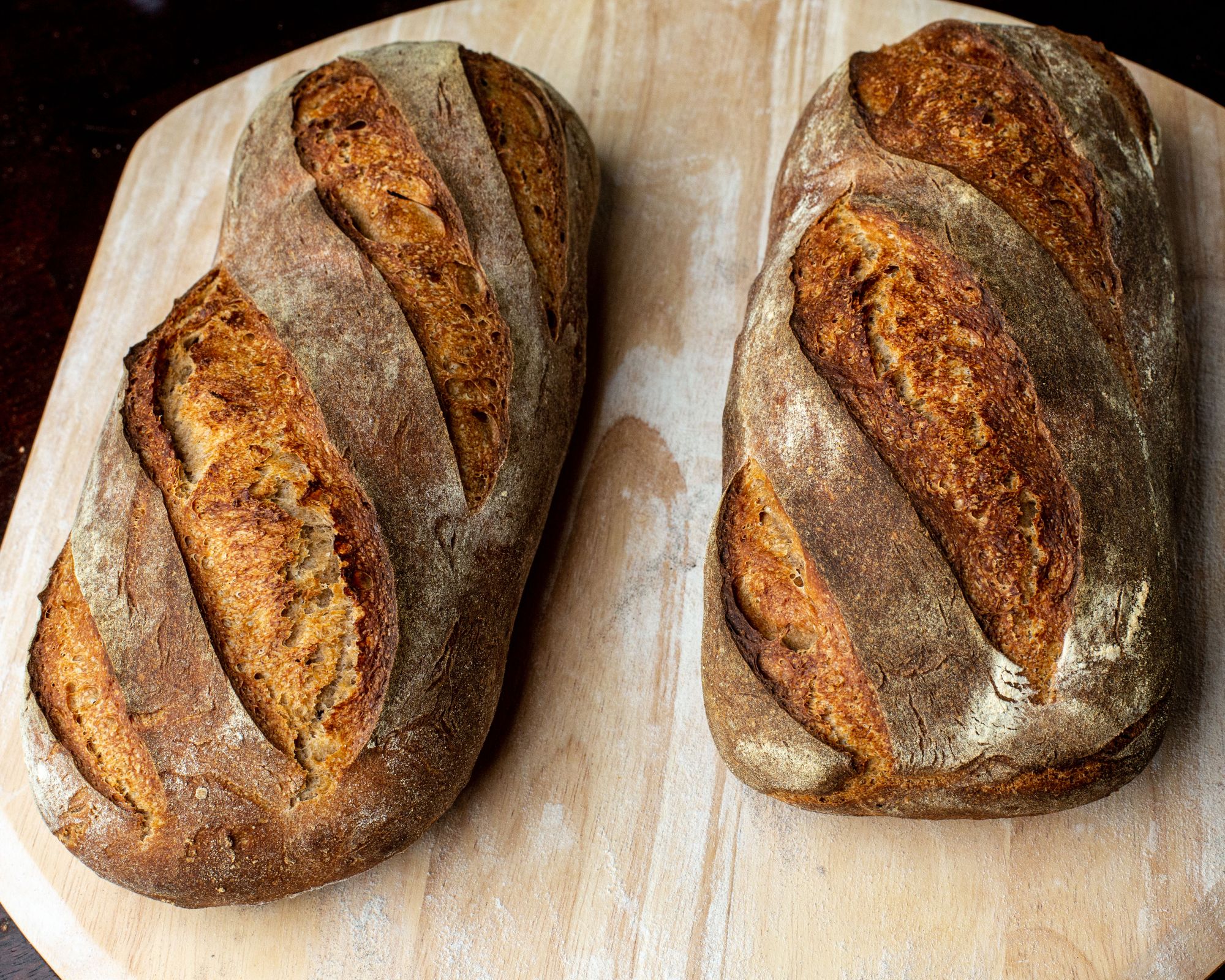
A complete treatise on the preparation of bread would be book-length, and indeed many good books of this sort have been written. I personally recommend Bread by Jeffrey Hamelman, either the first or second edition. Excellent extant work aside, this section will highlight some commonly-overlooked techniques for bread preparation to speed you on your way to glutinous delight.
Measure Ingredients By Weight
Never measure ingredients for any bread by volume. Dough consistency is extremely sensitive to relative percentages, and dry ingredients such as wheat flour, rye flour, &c. can vary by 10% or more when measured by volume, but vary only by the accuracy of your scale or balance when weighed or massed.
Issues related to technique will always be masked by errors in ingredient quantity. Measure ingredients by weight.
Knead Until Smooth
Most doughs take on a noticeably smoother texture after kneading has caused good gluten formation. Once you have achieved this desired level, there is no need to knead further, and in fact this is considered harmful as it "overworks" the dough.
Alternatively, you can conduct the "windowpane" test, in which a small piece of dough is stretched thin. If the dough stretches thin enough to become translucent (hold it up to a bright lamp or the sun) and does not break, your kneading is complete.
Note that doughs with high percentages of whole wheat and rye flours will exhibit substantially less gluten formation. This is entirely normal and should not be questioned.
Do Not Use Iodized Salt
The additional iodine in "iodized" salt (all salt contains some iodine) acts to retard (slow) the leavening in sourdoughs and ultimately leave a flatter, weaker dough. FineAs in "not coarse." sea salt is readily available, inexepensive, and serves well.
Steam Creates Crusts
In order to give your bread an excellent crispy crust, you must use steam at the beginning of the bake. Commercial ovens and home combinations ovens aka "combi ovens" feature direct steam injection capabilities; however most home ovens sold in the United States, even expensive luxury models, do not have this feature, and you must add steam a different way. There are two principal methods:
-
Use a Dutch oven. Preheat the dutch oven for at least an hour, then bake with the lid on for approximately half of the total bake time, finishing the bake with the lid off. This has the effect of trapping moisture released from the dough and steaming the loaf nicely. Warning: one downside is that transferring the loaf in and out of the searing-hot Dutch oven without burning yourself can be precarious. Another downside is that this is generally only appropriate for boules, unless one owns a batard-or baguette shaped Dutch oven. Note that ceramic baking cloches for baguettes and batards do exist, and do work, but often run over $100. Dutch ovens themselves are not cheap, but you should already own one.
-
Use a baking stone (or steel) with added steam. There are several methods, the most straightforward of which is to preheat the stone with a cast iron on a lower oven rack. Boil a kettle of water before transferring the loaves to the stone, and immediately after loading the loaves in, pour about a cup of boiling water into the cast iron pan. Warning: this will flash immediately into a billowing cloud of steam. You must wear a stout mitt or risk a grievous burn. The effect, however, is to produce an excellent amount of steam, which in turn produces an excellent crust. Vent off the oven by cracking the door about halfway through the bake, and removing the cast iron pan if it still contains any residual water.
Autolyse
Most doughs benefit from an "autolyse" period, in which the full dough is mixed without salt and allowed to rest for a period of approximately 30 minutes, after which the salt is mixed in and the dough is kneaded. For complicated reasons involving Science, this causes excellent gluten formation. It also reduces necessary kneading time, which is a triviality for those of us who own mixers, but a blessing to those who knead by hand.